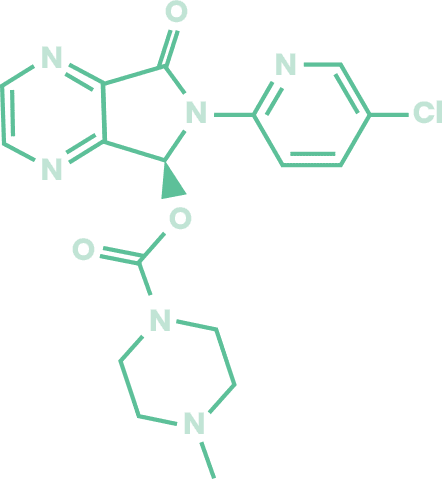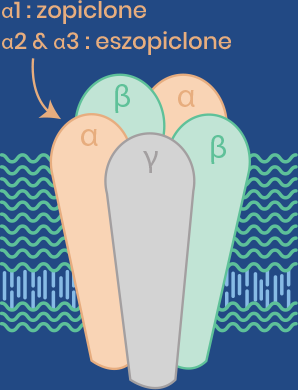Mechanism of Action
LUNESTA (eszopiclone) is a
non-benzodiazepine hypnotic
agent
that acts
upon the GABA-A Receptor*
The effects of eszopiclone are due to modulation of gamma-aminobutyric acid (GABA)-A-receptor macromolecular complexes, containing alpha-1, alpha-2, alpha-3 and alpha-5 sub-units. This increases chloride conductance resulting in neuronal hyperpolarization, inhibiting neuronal transmission and causing sleep.1
Racemic zopiclone:
Effects predominantly
mediated
through
α1†
Eszopiclone:
Effects predominantly
mediated through
α2 and α3†


GABA-A Receptor: subunit composition
and eszopiclone binding site
Select Pharmacokinetics of LUNESTA*
Absorption1
Eszopiclone is rapidly absorbed
- Time to peak concentration (tmax):
approximately 1 hour - Terminal-phase elimination half-life (t1/2):
approximately 7 hours
In healthy adults, LUNESTA does not accumulate with once-daily administration, and its exposure is dose-proportional over the range of 1 to 6 mg.
Food Effects1
- In healthy adults, the rate of absorption of eszopiclone (tmax) was delayed by approximately 1 hour after a high fat meal

Tap to see
tmax of Eszopiclone and Zopiclone1,2†
Absorption (tmax)


Adapted from the Product Monograph.
Absorption (tmax>)


Adapted from the product monograph.